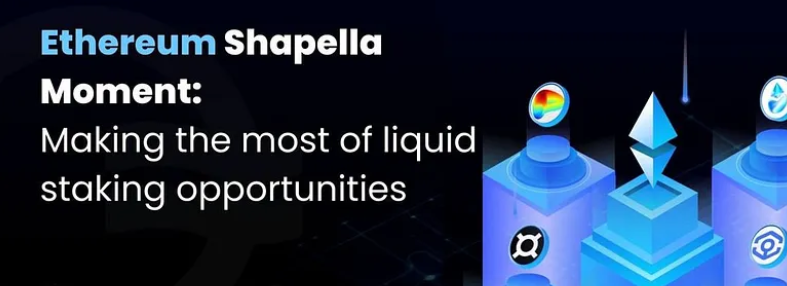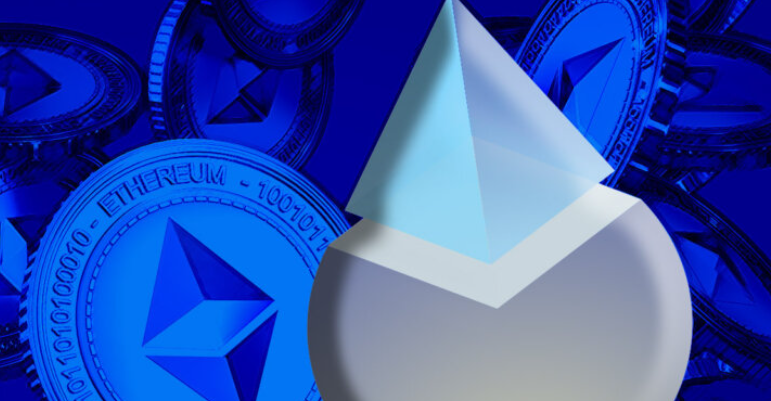When Ethereum undergoes the “ Shappella upgrade” ( Shanghai Upgrade ‘EIP-4895 )on April 12th, the network will unlock previously locked validator tokens from its conversion from proof of work to proof of stake last year. The unlock will significantly increase free-market liquidity and will lead to increased Eth token flow into the market.
There are a multitude of different liquid staking Ethereum protocols which are all set to cater for this increased demand.Recent months have seen liquid staking platforms attract a significant amount of focus and attention.
In this article, we’re going to take a look at some of the Ethereum staking products available on Ethereum and compare what they have to offer. There are many options to choose from, both decentralized and centralized. We will mainly be focusing on decentralized staking platforms which let users access the income streams from Eth reward staking but whilst maintaining security and custody of their tokens.
Introduction to ETH Liquid Staking
Two of the most popular protocols RocketPool and Lido have both been strong performers in the liquid staking space with their respective governance tokens surging in price since the start of January. Coinbase ($cbETH) is in the top three for their size of Ethereum staked but still remains a majoritively centralized authority. Below we’ll look at a few key statistics from the top liquid staking providers on Ethereum.
Lido — TVL 10.3b / APR 5% / Market Share 74.48% / Token $stETH
Considered the ‘OG’ of the liquid staking market, Lido offers exposure to Ethereum staking via its $stETH token. Users accrue value daily and can withdraw those rewards at any time through the Lido dashboard. Holders of $stETH can directly earn you share a portion of the staked rewards.
RocketPool — TVL 776.49m / APR 3.93% / Market Share 5.62% / Token $rETH
Being a newcomer in the space isn’t easy, however with a simplified platform and easy value accrual, RocketPool’s path to popularity has been short and wide-reaching. The only thing speculators need to do is to bridge or swap into $rETH and that’s it, value starts accruing just by holding the tokens. By buying and holding rETH you’re exposing yourself to the gains from Eth staking in the form of the underlying token value increasing. If you hold liquid tokens you are then able to go on and earn additional rewards we will touch on later.
Ankr — TVL 109.19m / APR 3.82% / Market Share 0.79% / Token $ankrETH
Ankr is a popular provider and builder of Web3 Infrastructure that helps developers, applications, and stakers access infrastructure through one decentralized platform. Ankr, unlike the other two mentioned platforms, has successfully launched several different types of liquid staking tokens for other major chains such as BNB, Avax and Matic. Ankr currently offers exposure to liquid Ethereum through their $ankrETH token along with a range of other products centred around preserving or increasing that yield.
StakeWise- TVL 152.82m / APR 4.79% / Market Share 1.11% / Token $sETH2
StakeWise runs secure and stable institutional-grade infrastructure, combined with unique tokenomics, to provide the highest possible staking yields for its users. StakeWise Ethereum staking consists of a hybrid token system breaking down users own staked Eth as $sETH2 tokens and splitting rewards into $rETH2 tokens (not to be confused with the RocketPool ticker $rETH).
Frax Staked ETH — TVL 200.7m / APR 6.37% / Market Share 1.6% / Token $frxETH & sfrxETH
With Frax you can leverage the existing Frax Finance ecosystem to maximise staking yield and smooth over the entire Ethereum staking process. Frax are known for releasing high quality products and their liquid staking Eth is no exception. Frax currently has $frxETH and $sfrxETH (staked Frax ether). frxETH acts as a stablecoin loosely pegged to Eth and should be thought of as such. $sfrxETH is their staking-value accrual token where reward values are accrued back to the token.
The best way to get LSD tokens and earn staking rewards
OpenOcean, the DEX aggregator, has integrated a lot of major liquid asset pools from popular providers like Lido, RocketPool, StakeWise and Frax. OpenOcean users will now be able to directly swap through those pools.
Let’s take stETH as an example. Swap ETH for stETH routed via Lido on OpenOcean = stake on Lido. However, if users swap via OpenOcean, they will get the best stETH price alongside staking rewards by Lido (see below figure).
Since OpenOcean is a DEX aggregator, integration of multiple liquid-LP pools from other DEXES was a must. OpenOcean users now have more choices and even more flexibility when considering effective portfolio strategies.
To show how effective aggregator platforms are, let’s look at the largest single trade routed through OpenOcean’s aggregator. This 150m dollar trade was from a user converting 96,000 Ethereum into $stETH. The trade was routed through several liquidity pools to provide the best possible price and the user faced no issues pushing through a trade of this size.
Go to OpenOcean and load up the tokens you want to trade into, it doesn’t matter if it’s $sfrxETH or $rETH, when using an aggregator you’ll always get the best possible price. As we can see, we’re only getting 0.08% price impact when swapping over $250k USD of ETH into RocketPools rETH token which is great as it means if we wanted, we can push through multiple large buys with little slippage.
Maximizing Yield
Earning yield is always a goal for many people, but did you know where are a couple extra steps you can take to truly maximize your returns from holding liquid staking tokens.The first method of earning extra is the simplest, LP farming. By providing tokens for both sides of a trading pair you will earn fees based on the provision of them as liquidity. If you chose a $stETH-$ETH pool for example, not only are you still accruing fees from staking but you’re also accruing rewards from the LP itself. Platforms like Convex finance make this super easy with the ability to boost rewards even further using veCRV rewards.
One option could be that of an autocompounder. Yearn Finance is an auto-compounding tool that currently offers up to 70%+ rewards by depositing to their yield pools. The pools are currently being boosted and offer some of the best non-leveraged rewards. You can buy Yearn’s native token $YFI on OpenOcean, by holding $YFI you can earn extra rewards from other stakers in addition to earning on your ETH.
There are also slightly more advanced or ‘degen’ methods for earning on your tokens. Oasis is a multi-use DeFi suite that’s built an AAVE loan loop and stake system. You can leverage wstETH and ETH up to 10x by including loan-looping as part of the staking process to boost rewards by up to 19% APR. This inherently is a slightly more risky strategy but one you can successfully make work if monitored.
Where do we go from here?
There are certainly many different places you can use your ETH, whether you decide to LP, to stake for rewards, or perhaps try out the Aave loan-loop method, one thing is for sure is the absolutely best place to buy whatever type of ETH or liquid tokens you want is OpenOcean. OpenOcean is a multichain DEX Aggregator and able to give you the best rates on your swaps. You can buy all the platform’s governance tokens as well as whatever ETH you need on OpenOcean, whether you’re aiming for liquid staking, value accrual or a bit of both.
Our plans for OpenOcean in the immediate future are to introduce an all-inclusive Ethereum staking solution that will aid users in making informed decisions regarding their staking preferences, give them the best prices and speed up the whole painstaking process. It makes sense to buy on a platform where you know you’re always going to get the most ETH for your money.
About OpenOcean
OpenOcean is the widest reaching DEX Aggregator, a cross-chain swap aggregator, and Web 3 middleware developer in the crypto space. Offering a suite of tools across 20+ networks and 270+ unique sources of liquidity, OpenOcean is building tools for now and for the future. Experience what it’s like to trade with ease, the way that you want to with #OpenOcean.
 English
English
 Deutsch
Deutsch
 Español
Español
 Français
Français
 Português
Português
 日本
日本
 한국인
한국인
 Türkçe
Türkçe
 Русский
Русский
 Tiếng Việt
Tiếng Việt














